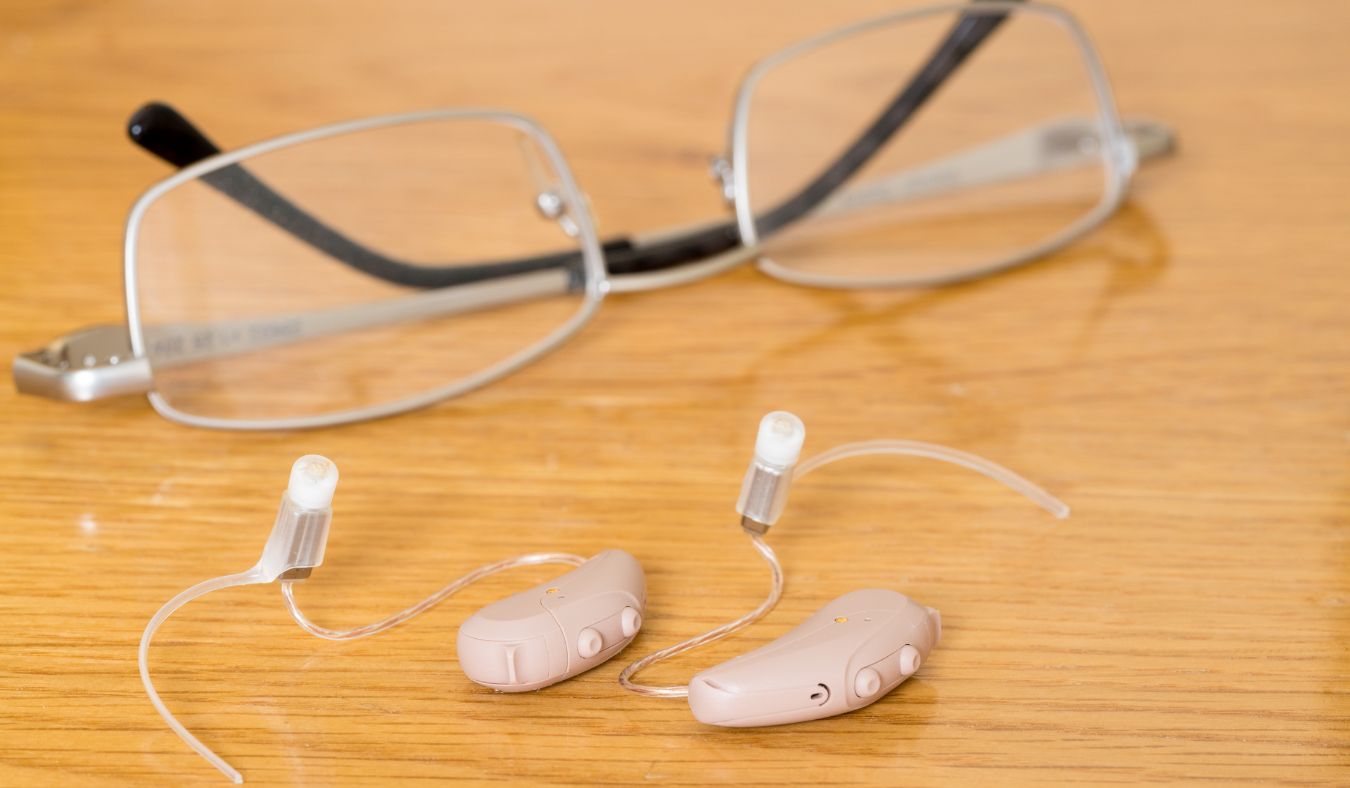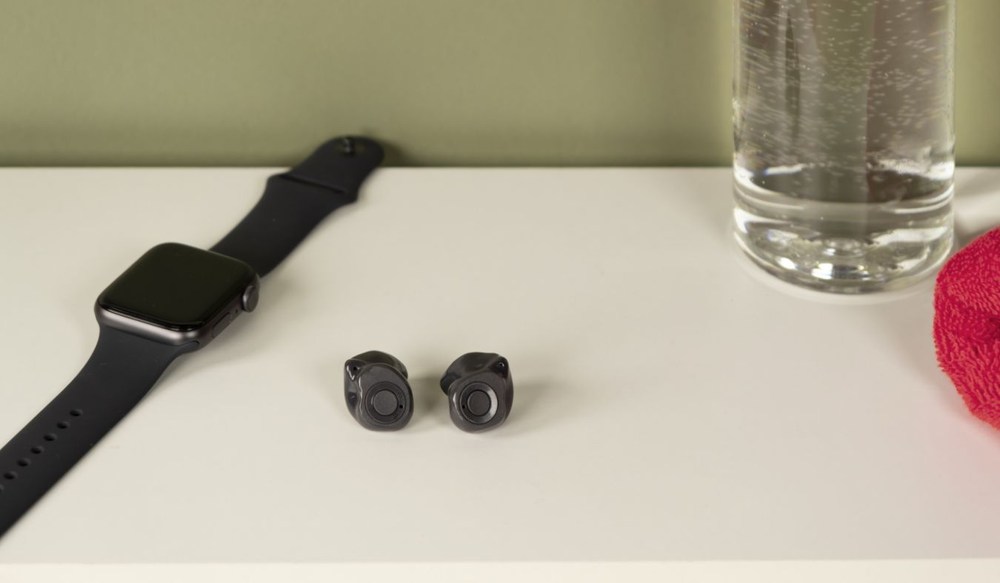The Impact of Hearing Aid Design on Wearer Comfort
When you’re choosing hearing aids, it’s easy to focus entirely

By: admin | August 28, 2024
Hearing aids are empowering tools. Getting comfortable with their various settings can significantly boost your listening experience. As you learn to live with hearing loss, understanding the settings on your hearing aid is a vital step. It might seem overwhelming initially, but with some guidance and practice, you’ll quickly get the hang of these settings. The objective? To improve your listening experience in diverse environments, from a quiet chat at home to discerning dialogue in a busy coffee shop.
Hearing aids are sophisticated devices designed to amplify sound, helping individuals with hearing loss engage more easily in conversations and daily activities. At their core, hearing aids capture, amplify and deliver sound in a way that enhances clarity without introducing distortion.
The process begins with a small microphone that picks up sound from your environment, converting it into an electrical signal. This signal is then sent to the amplifier, which increases its strength in a controlled manner. Instead of simply turning up the volume, the amplifier boosts the signal enough to make sounds clearer and more audible, while minimizing distortion. Advanced hearing aids also use algorithms to enhance speech and reduce background noise.
Next, the amplified signal reaches the receiver, or speaker, which converts it back into sound and delivers it to your ear. The quality of the receiver is crucial for maintaining clarity and naturalness in the sound.
Powering this entire process is the hearing aid’s battery. Modern devices are energy-efficient, with batteries that can last a week or more on a single charge. Consistent power delivery is key to ensuring stable performance and sound quality. Many hearing aids now offer rechargeable options, adding convenience to their reliable functionality.
The importance of comprehending your hearing aid settings cannot be emphasized enough. These settings can be tweaked to suit different environments, improving your ability to hear in both quiet and noisy situations. It might take some patience and time to become comfortable making these adjustments, but once you get the hang of it, you’ll be able to optimize your hearing experience to meet your needs. However, it’s worth noting that while these settings offer customization, they may not entirely eliminate background noise or provide perfect clarity in all situations.
Let’s talk about some typical settings on your hearing aid. Understanding these settings is crucial to maximizing the benefits of your device. Volume control is a common setting on hearing aids. It lets you adjust the loudness of sounds based on your comfort and the environment you’re in. Another standard feature is directional microphones, which help focus on sounds coming from a specific direction – incredibly useful in situations where background noise can be overwhelming.
Some hearing aids come with telecoil settings. This feature improves phone conversations by reducing background noise and focusing on the voice at the other end. However, not all phones are compatible with this feature, so it’s advisable to check with your audiologist for compatibility issues.
Regular maintenance of your hearing aid is another crucial aspect. Regular cleaning and routine check-ups can significantly extend its lifespan and ensure optimal performance. A well-maintained device equals a better listening experience!
Volume control is an essential feature in your hearing aid. It’s a straightforward yet effective feature that can significantly enhance your listening experience.
The advantage of volume control lies in its ability to fine-tune sound levels to match your comfort and environmental needs. However, over-reliance on volume control can lead to an artificial sounding environment and may even cause discomfort if the volume is set too high. Striking a balance and using this feature wisely is key to an optimal hearing experience.
The program button on your hearing aid might seem complex, but it’s straightforward once you understand it. This button allows you to switch between different preset programs, each designed for a specific listening environment. The ability to switch between these programs gives you control over your hearing experience in diverse situations. So don’t be afraid to experiment – it’s all about finding what works best for you!
Employing directional microphones can significantly improve your hearing experience in noisy environments. By focusing on the sound source you want to hear, these microphones help cut through the noise. Regular battery replacements ensure your hearing aid and its features function optimally.
The telecoil setting on your hearing aid can offer significant benefits, especially in certain situations. It’s designed to improve phone conversations by reducing background noise and focusing on the voice at the other end. Not all phones are compatible with this feature, so checking with your audiologist for compatibility is recommended.
Some public venues like theaters and churches have special sound systems called loop systems. When you switch your hearing aid to the telecoil setting in these places, it picks up sound from these systems directly, enhancing clarity and reducing background noise. Understanding and using the telecoil setting effectively can open up a new world of auditory experiences for you!
Bluetooth connectivity in your hearing aid offers a seamless way to integrate your hearing aid with various modern devices, significantly enhancing your auditory experience and overall convenience. This technology allows you to stream audio directly from devices like smartphones, tablets or televisions straight to your hearing aid, delivering sound with clarity and reducing the need for additional accessories.
For instance, when connected to your smartphone, you can listen to music, take phone calls or even participate in video chats with sound streaming directly to your hearing aid, making the experience more personal and clearer. This direct streaming ensures that you hear every detail, whether it’s the subtle tones in your favorite song or the nuances of a conversation, without interference from background noise.
Many hearing aids equipped with Bluetooth connectivity come with companion apps that you can install on your smartphone. These apps allow you to adjust settings like volume, sound balance and even switch between different listening programs tailored to specific environments, all with a simple tap on your screen. This gives you the freedom to customize your hearing experience in real-time, ensuring that your hearing aid adapts to your changing needs throughout the day.
Bluetooth also enables your hearing aid to connect with other smart devices, like home assistants or navigation systems, making everyday tasks more accessible. For example, you can receive turn-by-turn directions from your GPS directly into your hearing aid, or hear alerts from your smart home system, keeping you connected and informed without having to look at your phone.
Improving your hearing aid’s sound quality based on your environment is simpler than you might think! Hearing aids come equipped with environment-specific programs, pre-set modes designed to enhance your listening experience in different settings. Switching between these programs is typically as easy as pressing a button on your hearing aid or using an associated app on your smartphone. By familiarizing yourself with these different modes and learning when to use each one, you can take charge of your auditory experience and enjoy clearer, more nuanced sound regardless of where you are!
Adjusting your hearing aid settings to suit your specific needs and the environment you’re in is a vital step towards an improved auditory experience. It might seem intimidating at first, especially if you’re new to using a hearing aid. But don’t worry – your audiologist is there to guide you through this process. They can help you understand how each setting works and teach you how to adjust them effectively. The goal is not perfection but improvement – every small adjustment brings you closer to an enhanced listening experience!
Let’s talk about how to resolve common issues that might arise with your hearing aid settings. One common issue is a whistling or feedback sound, usually caused by the hearing aid not fitting properly in your ear. A simple solution is to check if your hearing aid is inserted correctly or consult your audiologist for adjustments.
Another common problem is difficulty hearing in noisy environments despite adjusting the volume or switching programs. This could be due to various factors like incorrect program selection or an overly crowded environment. If you still find noisy situations difficult, seek advice from your audiologist who can help optimize your settings for such environments.
Adjusting to new hearing aids can be an exciting yet challenging experience. Whether you’re new to hearing aids or have recently upgraded to a model with advanced features, getting comfortable with the various settings is essential for maximizing their benefits. It’s normal to need some time to adapt, but with a few practical strategies, you can make this transition smoother and more effective. Here are some tips to help you become more confident and comfortable with your hearing aid settings.
Customizing your hearing aid settings to suit your unique needs might seem intimidating, but you’re not alone. Your audiologist is there to guide you, offering expert advice on how to modify your hearing aid settings for an optimal auditory experience.
With their help, you can learn how to adjust the volume control, switch between different programs and even manage features like directional microphones or telecoil settings. Over time and with practice, these adjustments will become easier and more intuitive. Every small change brings you one step closer towards an improved listening experience tailored specifically for you!
Mastering your hearing aid settings is a personal process. It may seem challenging at first, but with patience, practice and professional guidance, you can take control of your auditory experience. Each step you take towards understanding and adjusting these settings brings you closer to an enriched quality of life.
If you need assistance or have questions about your hearing aid settings, don’t hesitate to reach out for professional help. Our team at Davis Audiology is ready to provide the support and expertise needed as you learn to optimize your hearing health. You can reach our Greenville, Simpsonville or Spartanburg, SC offices at: (864) 810-6238.
Tags: benefits of hearing aids, hearing aid basics, hearing aid repair

When you’re choosing hearing aids, it’s easy to focus entirely
By: admin | October 20, 2025

Summer heat affects hearing aids differently than you might expect. When
By: admin | July 29, 2025

Music plays different roles in people’s lives; it motivates you
By: admin | June 20, 2025
